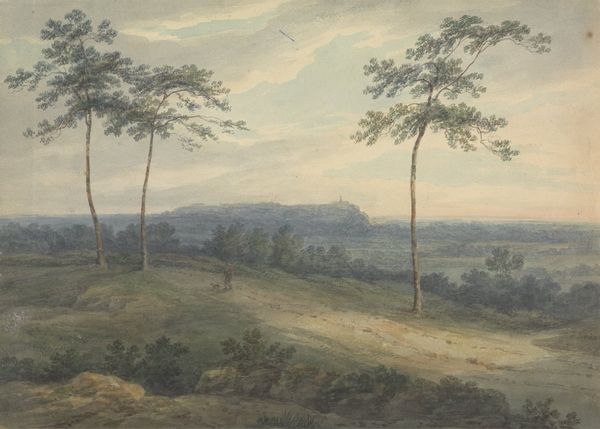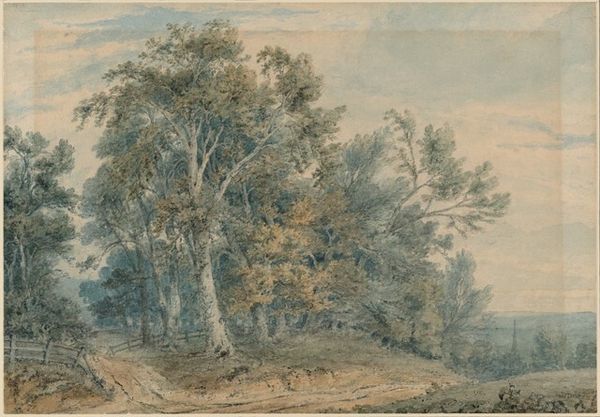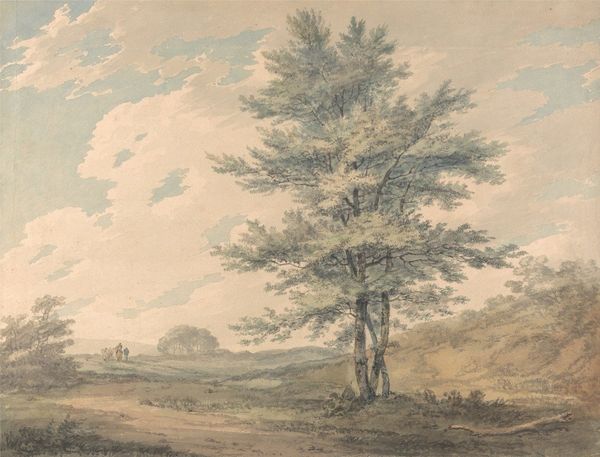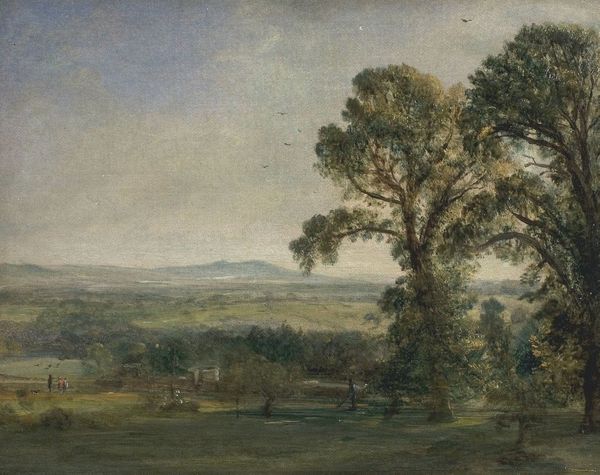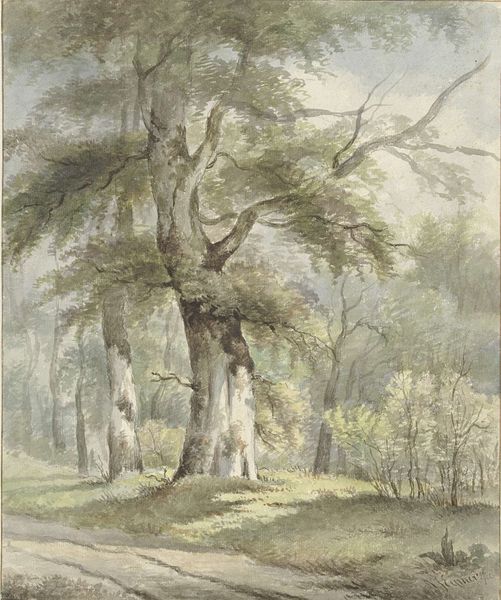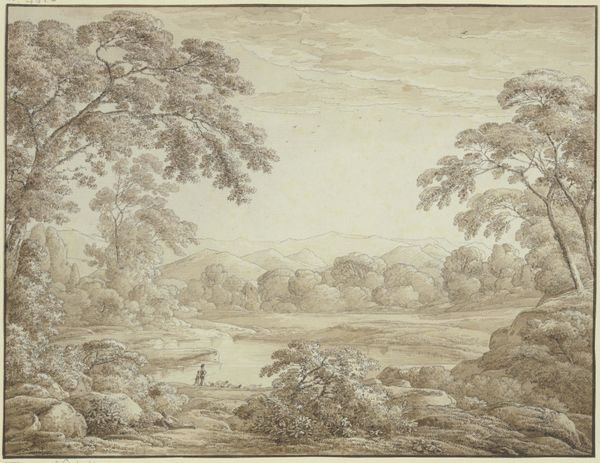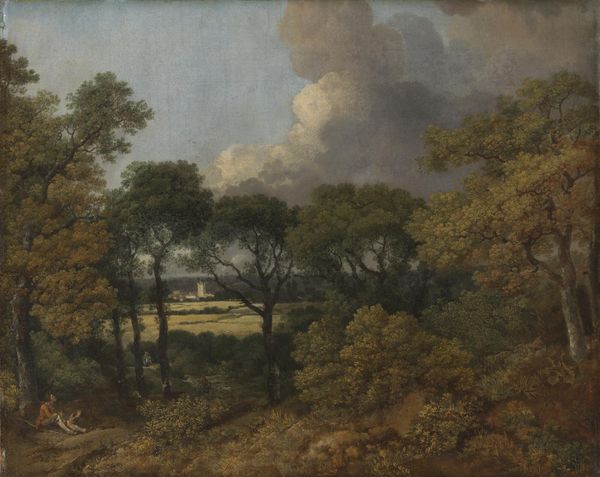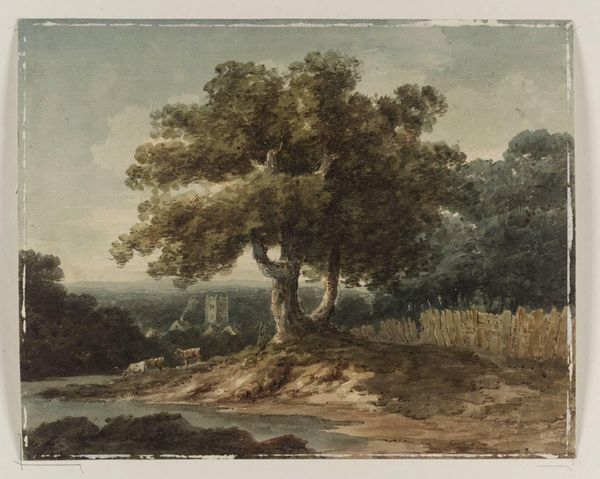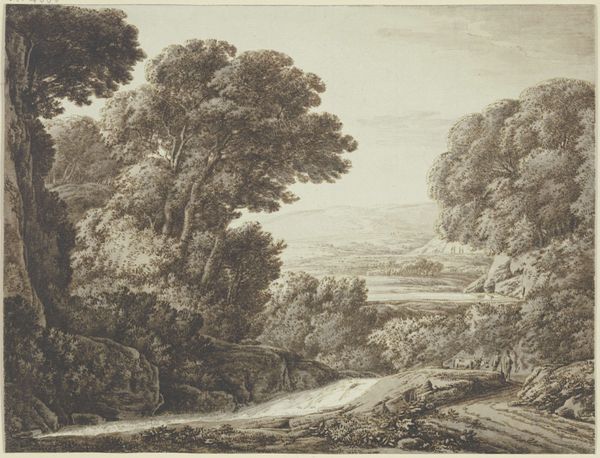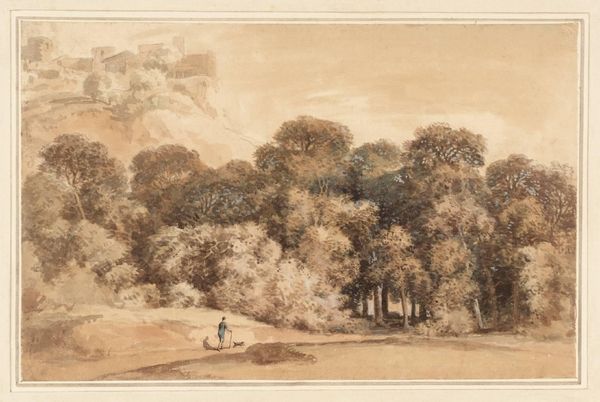
plein-air, watercolor
#
plein-air
#
landscape
#
oil painting
#
watercolor
#
romanticism
#
watercolour illustration
#
mixed medium
#
watercolor
Copyright: Public Domain: Artvee
Curator: J.M.W. Turner's "Windsor," dating from around 1798, presents us with an expansive view rendered primarily in watercolor with some mixed media elements. My immediate response is one of quiet observation; the tonal range, subtle gradations of light…it's a masterclass in atmospheric perspective. Editor: The castle looming in the distance, framed by what appears to be both the tranquility and confines of a wooded area...I wonder, what are the relationships of power dynamics to place, and of this historical space to contemporary sociopolitical conditions? Curator: Structurally, Turner's use of trees as a repoussoir is key here, isn't it? The trees draw our eyes forward, establishing depth while their verticality echoes the distant towers, thereby guiding and controlling the viewers' gaze within the landscape. Editor: Indeed, but who are “we” whom the compositional techniques supposedly affect in this manner, and might we question the presumed universal accessibility of Turner’s visual language when Windsor was and remains a privileged space for the British Royalty? Curator: Let's not ignore the medium itself. Watercolor at this period held connotations, especially its association with amateur and topographical work, so how does Turner simultaneously utilize and subvert these traditions to elevate his work? Editor: Perhaps we consider Turner’s relationship to landscape painting, and this piece's context within a larger British imperial project; landscape became crucial in defining national identity and in justifying territorial claims, even when the "empty" and unclaimed lands often had their own Indigenous populations. Curator: Looking more closely, the loose, gestural brushwork suggests the influence of the picturesque aesthetic. A certain deliberate lack of finish seems to allow for open-ended meaning. We might consider his treatment of sky and atmosphere as representative of transcendence. Editor: And it invites considerations about gendered nature, the natural landscape representing feminine passivity that facilitates male subjectivity and territorial ambitions; even something seemingly as innocuous as a watercolor becomes deeply entangled within systems of power and privilege. Curator: Seeing all of those structural components interwoven leads me to conclude that the work itself provides, ultimately, a rather compelling interplay of surface and depth. Editor: The very act of interpreting and displaying art cannot escape its entwinement within history and ideologies.
Comments
No comments
Be the first to comment and join the conversation on the ultimate creative platform.
